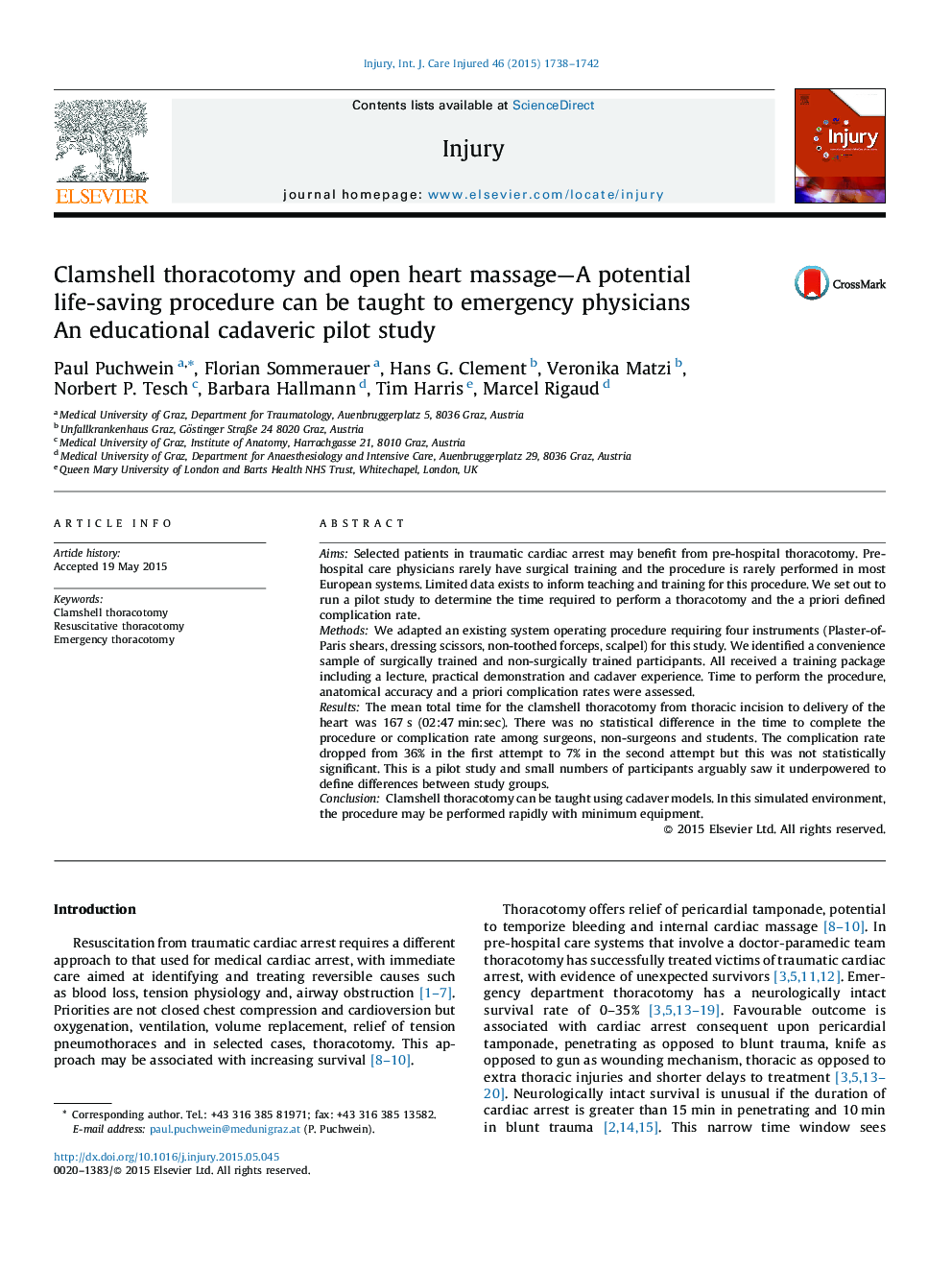| Article ID | Journal | Published Year | Pages | File Type |
|---|---|---|---|---|
| 3239115 | Injury | 2015 | 5 Pages |
AimsSelected patients in traumatic cardiac arrest may benefit from pre-hospital thoracotomy. Pre-hospital care physicians rarely have surgical training and the procedure is rarely performed in most European systems. Limited data exists to inform teaching and training for this procedure. We set out to run a pilot study to determine the time required to perform a thoracotomy and the a priori defined complication rate.MethodsWe adapted an existing system operating procedure requiring four instruments (Plaster-of-Paris shears, dressing scissors, non-toothed forceps, scalpel) for this study. We identified a convenience sample of surgically trained and non-surgically trained participants. All received a training package including a lecture, practical demonstration and cadaver experience. Time to perform the procedure, anatomical accuracy and a priori complication rates were assessed.ResultsThe mean total time for the clamshell thoracotomy from thoracic incision to delivery of the heart was 167 s (02:47 min:sec). There was no statistical difference in the time to complete the procedure or complication rate among surgeons, non-surgeons and students. The complication rate dropped from 36% in the first attempt to 7% in the second attempt but this was not statistically significant. This is a pilot study and small numbers of participants arguably saw it underpowered to define differences between study groups.ConclusionClamshell thoracotomy can be taught using cadaver models. In this simulated environment, the procedure may be performed rapidly with minimum equipment.
